Not only do these edible purple flower varieties add color to your garden, but they bring a unique flavor to your favorite dishes!
Why not cultivate flowers that are as practical as they are pretty? These edible purple flower varieties are not only a feast for the eyes but also for the palate. From the subtle hues of lavender and lilac to the deep burgundy undertones, these blooms are surely a treat for your tastebuds!
Edible Purple Flower Varieties
1. Pansies

Botanical Name: Viola × wittrockiana
Notorious for its face-like blooms, these pretty purple blooms add a mild, sweet flavor to cheesecakes and shortbread cookies. Vietnamese press these flowers into rice paper rolls for a fresh, herby note.
2. Nasturtium’ Ladybird Rose’
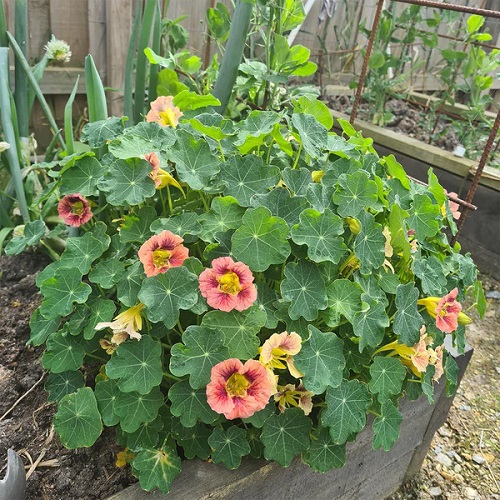
Botanical Name: Tropaeolum minus ‘Ladybird Rose’
The spicy, peppery flavor of ‘Ladybird Rose’ Nasturtium makes it a great addition to mixed green salads. It’s also a vitamin C and microelement-rich garnish for dishes like pasta or egg salads, offering both nutrition and color.
3. Thai Basil
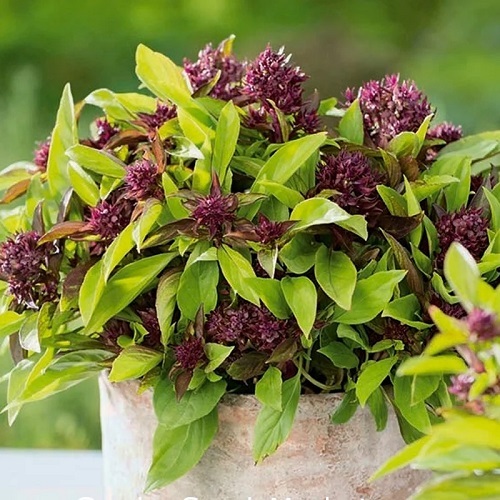
Botanical Name: Ocimum basilicum var. thyrsiflora
A major ingredient in Thai cooking, it adds a spicy-sweet flavor to dishes like Thai basil chicken (Pad Krapow Gai) and green curry. Plus, its dark purple to lavender flowers bring a subtle sweetness and anise-like flavor, along with benefits for digestion due to essential oils.
4. Society Garlic
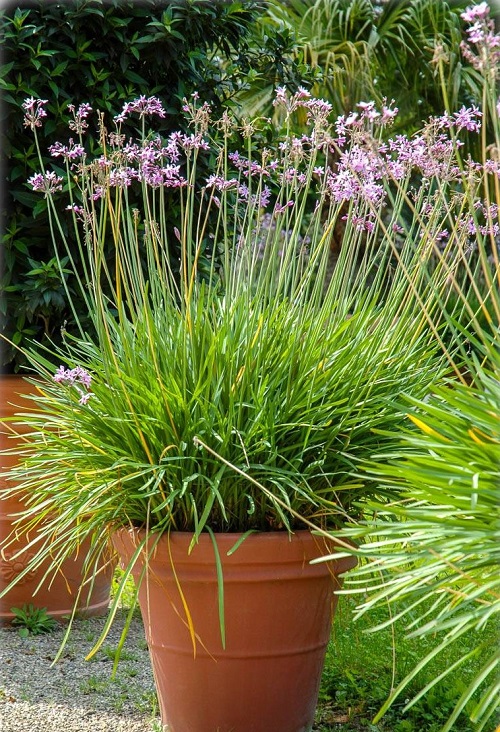
Botanical Name: Tulbaghia violacea
If you want a garlicky flavor in your dishes without the typical garlic breath, this should be your pick! Bake them in garlic bread or season in stir-fries for an additional anti-inflammatory punch to your meals.
5. Sweet Violet
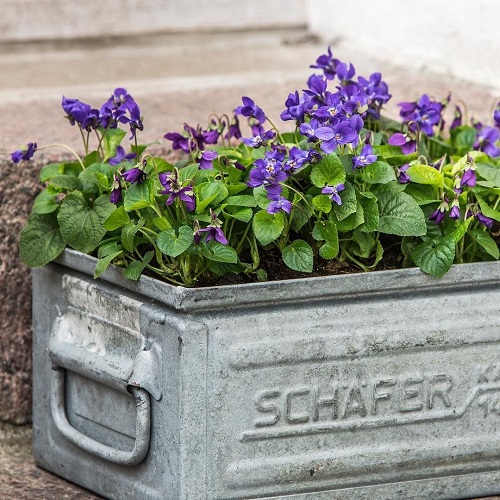
Botanical Name: Viola odorata
Endemic to the United Kingdom, these mini violet blooms offer a sweet flavor to French desserts and candies. Apart from their floral taste, they are ideal for natural cough syrups, too, thanks to their soothing properties.
Also, you can pick them for your pollinator-themed gardens, and you better know why!
6. Purple Rose
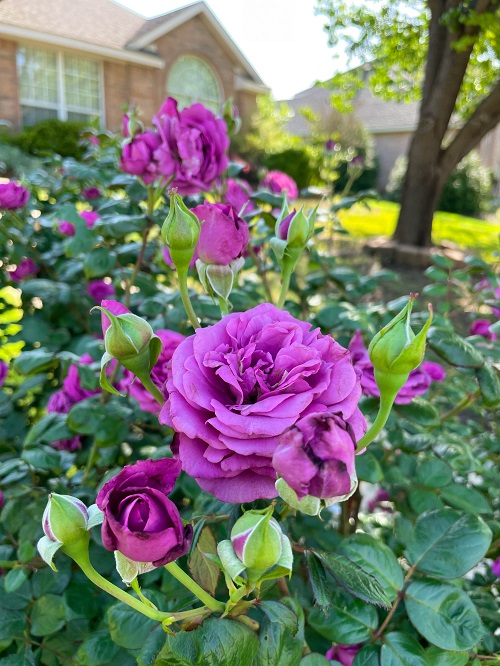
Botanical Name: Rosa
Do you know that the flower’s petals and the hip fruit, which appears in the sepal post-blooming, are edible? You can sprinkle them on cakes, ice creams, and desserts. Also, Middle Easterners often use them in rose-flavored baklava or infuse them in rose syrups for desserts.
7. English Lilac
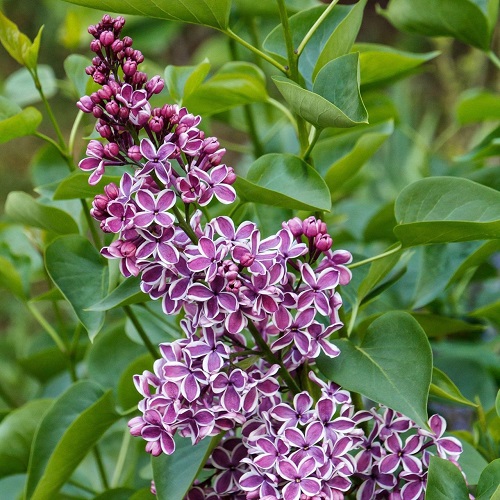
Botanical Name: Syringa vulgaris
These pretty purple-lavender blooms find a prominent place in floral-infused beverages like lemonades or pastries. Not just that, they’ve been traditionally used for their astringent qualities in home remedies.
8. Shevanti
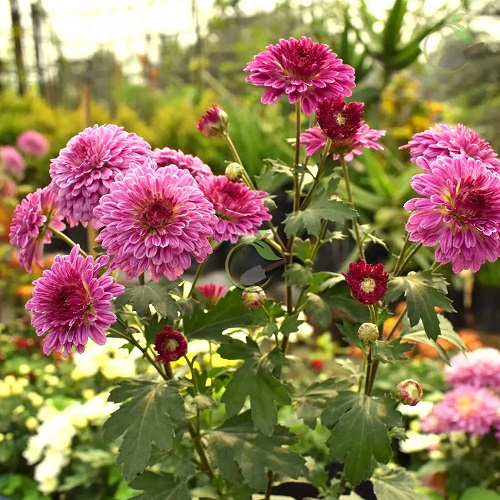
Botanical Name: Chrysanthemum morifolium
Chinese brew Shevanti petals into a flavorful tea that’s refreshing but has a slightly bitter taste. Sweet and yellow variants are also used in many Asian beverages. However, it carries the risk of dermatitis if consumed in large quantities.
9. Wild Bergamot
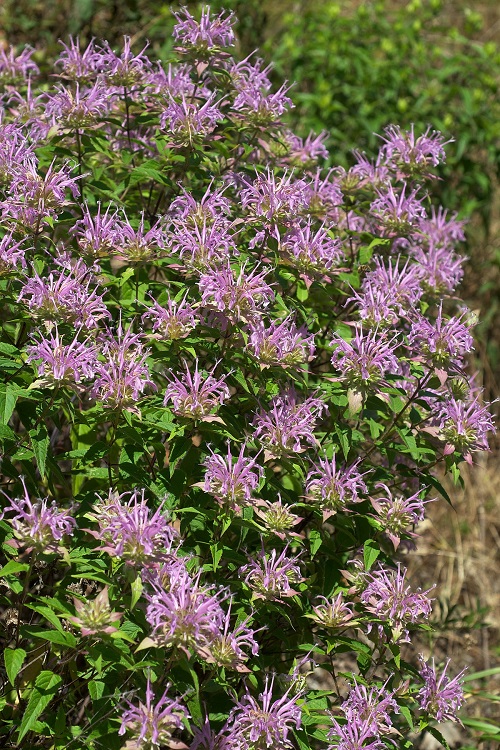
Botanical Name: Monarda fistulosa
Wild Bergamot flowers have a citrusy flavor with spicy oregano undertones, perfect for using fresh or dried in teas, syrups, or sauces. Additionally, they boast plenty of medicinal benefits from treating cold to clearing out pimples.
10. Chives
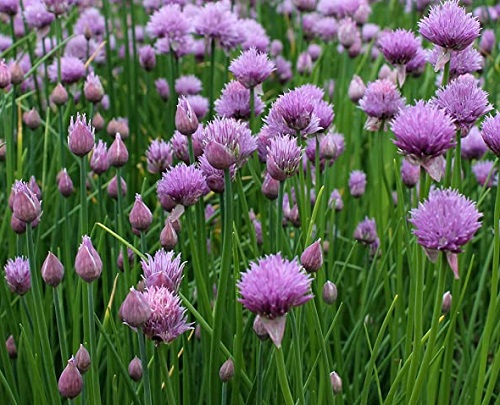
Botanical Name: Allium schoenoprasum
With hints of onion flavor, chives are a gourmet addition to cream cheese spreads and savory muffins. Beyond taste, these also boast heart-healthy benefits, thanks to their high vitamin K content.
11. Rosemary 1 3 4 11

Botanical Name: Salvia rosmarinus
These tiny, lavender-colored flowers add a subtle, slightly sweeter twist to the familiar rosemary flavor. They’re excellent in Mediterranean dishes, like rosemary chicken, or scattered over focaccia. Their antioxidants make them as healthy as they are tasty.
12. Lavender
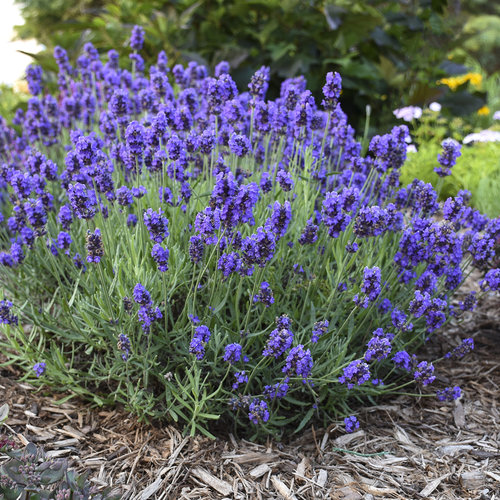
Botanical Name: L. angustifolia
Lavender is a favorite in sophisticated desserts like lavender crème brûlée and honey lavender ice cream. Its floral, slightly earthy flavor is also a hit in cocktails, especially in a lavender-infused gin. Aside from its culinary uses, lavender is famed for its calming properties.
13. Hollyhocks
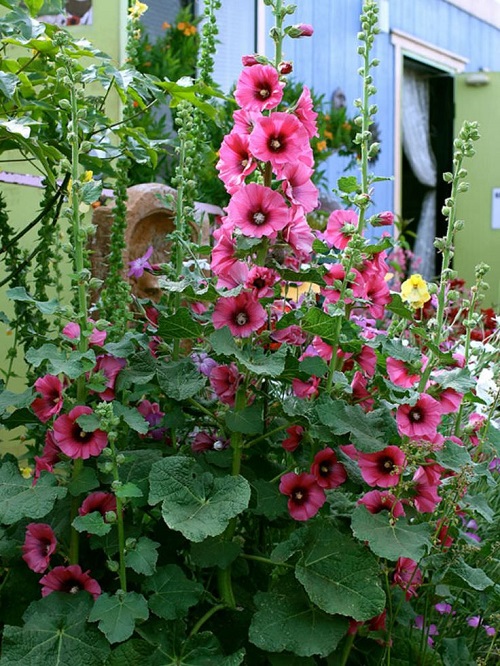
Botanical Name: Alcea rocsea
The large, purple-magenta flowers make those boring salad bowls colorful, while their mild, nutty flavor complements more robust flavors in grain-based dishes. In Turkish cuisine, its petals are also used to make certain traditional sweets with diuretic and anti-inflammatory properties.
14. Crane’s Bill Geranium
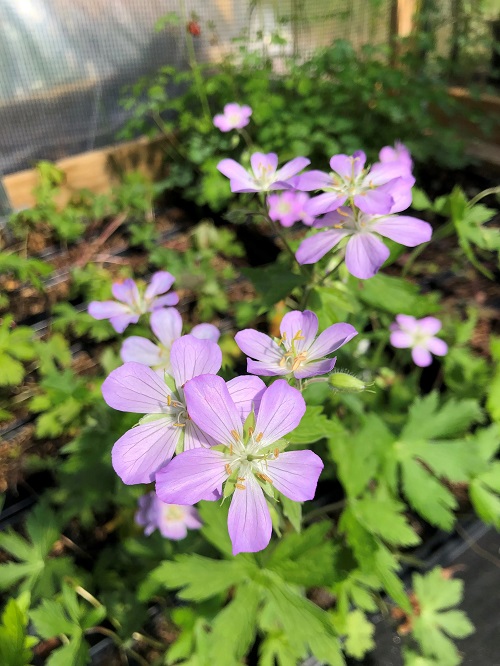
Botanical Name: Geranium maculatum
These large lilac blooms impart a mild apple-like flavor, perfect for jazzing up summer salads or as a dessert garnish. The leaves and flowers are also infused in herbal teas for their therapeutic benefits.
15. Beach Rose

Botanical Name: Rosa rugosa
Beach Rose petals bring a robust, slightly fruity flavor to the table. They’re great in lesser-known concoctions like rose petal jam or for a floral note to chocolate desserts. In addition to their culinary uses, these roses are packed with vitamin C and have traditional uses in skincare remedies.






